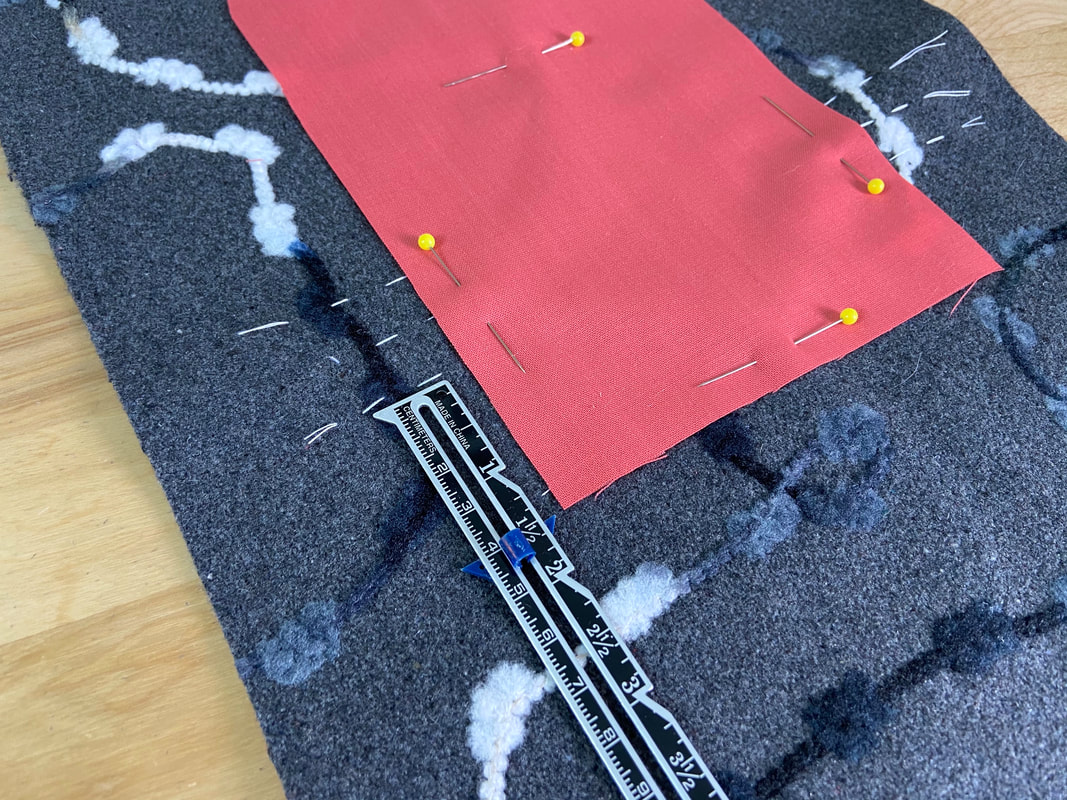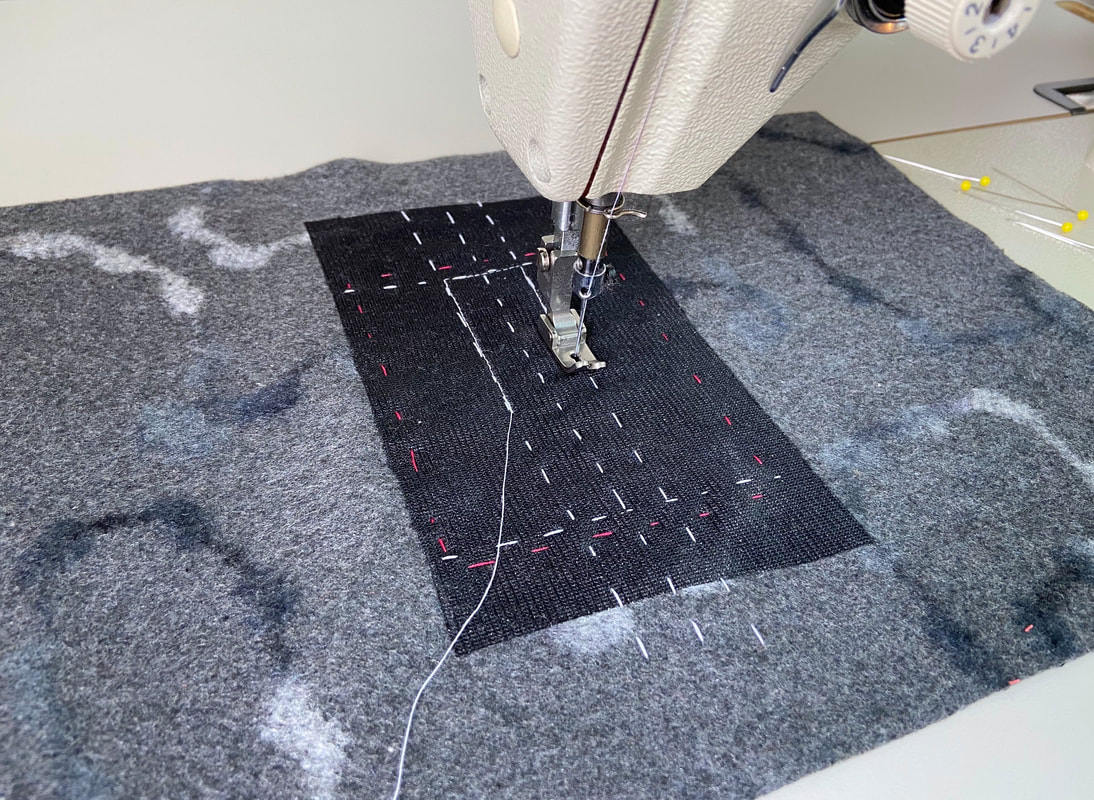Sewing Process: Why Use Hand Basting To Mark A Slash Pocket Opening?
When sewing slash pockets (such as welt or bound applications), marking the exact pocket opening with hand basting directly on the garment plays an important role in facilitating both the alignment and stitching process.
Not only should the pocket opening lines be measured and marked accurately, it is highly recommended that the hand basting lines are extended out by about 1" at all corners. As you'll see below, doing so will provide an important guide in the alignment process.
Not only should the pocket opening lines be measured and marked accurately, it is highly recommended that the hand basting lines are extended out by about 1" at all corners. As you'll see below, doing so will provide an important guide in the alignment process.
Hand basting is a much smarter marking option than other conventional techniques such as tailor's chalk or transfer paper, as it is simultaneously transferred to both the face and wrong sides of the garment. In the pocket construction process, the pocket bag layer is aligned from the garment's face side but stitched from its wrong side. With both of these steps, the same hand basting lines are used as a reference.
When aligning the pocket layer to the pocket opening lines, the layer is placed directly on top of the hand basting which naturally, covers the marked opening. The 1" basting extensions visible on each side come in handy when aligning the pocket layer accurately and correctly.
Note: Once aligned, it also helps to secure the pocket layer with some additional hand basting to prevent it from shifting in the machine stitching process.
The rectangular pocket opening is stitched from the application's wrong side, following the same hand basting marks used in the pocket alignment process (on its face side). This is why hand basting provides an essential marking tool, leaving precise sewing and alignment guides on both the garment's right and wrong sides.
Hand basting allows the stitched pocket opening to end up in perfect relation to the pocket bag layer even though this layer was not visible in the stitching process (the rectangular opening is stitched from the garment's wrong side).
Last but not least, the center hand basting line serves as a precise guide in the slashing process. For that reason, it is important not to ignore marking this center line in the hand basting process.








